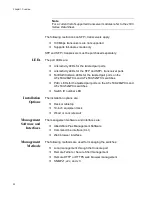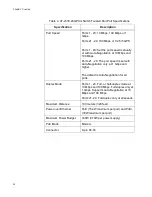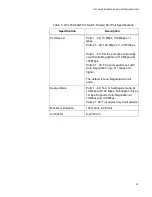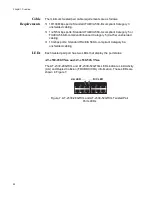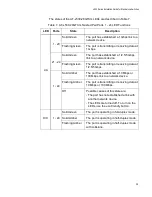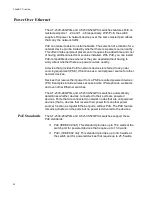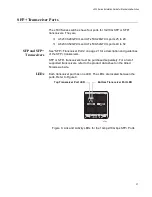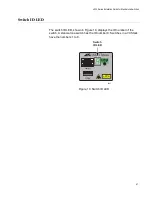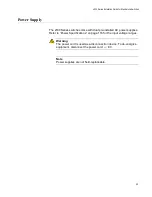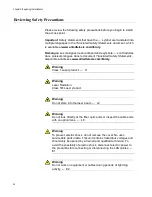
Chapter 1: Overview
36
Ports set to the Critical level, the highest priority level, are guaranteed
power before any of the ports assigned to the other two priority levels.
Ports assigned to the other priority levels receive power only if all the
Critical ports are receiving power. Ports that are connected to your most
critical powered devices must be assigned to this level. If there is not
enough power to support all the ports set to the Critical priority level,
power is provided to the ports based on port number, in ascending order.
The High level is the second highest level. Ports set to this level receive
power only if all the ports set to the Critical level are already receiving
power. It there is not enough power to support all of the ports set to the
High priority level, power is provided to the ports based on port number, in
ascending order.
The lowest priority level is Low. This is the default setting. Ports set to this
level only receive power if all of the ports assigned to the other two levels
are already receiving power. As with the other levels, if there is not enough
power to support all of the ports set to the Low priority level, power is
provided to the ports based on port number, in ascending order.
Power allocation is dynamic. Ports supplying power to powered devices
can cease power transmission if the switch power budget is at maximum
usage and new powered devices, connected to ports with higher priorities
become active.
Wiring
Implementation
The IEEE 802.3af standard defines two methods for delivering DC power
over twisted pair cable by a switch to powered devices. These methods
are known as Modes A and B, and identify the individual wires that carry
the DC power within the cable from the switch to powered devices.
Twisted pair cabling typically consists of eight wires. With 100Base-TX
devices, the wires connected to pins 1, 2, 3, and 6 on the RJ-45
connectors carry the network traffic while the wires connected to pins 4, 5,
7, and 8 are unused. At higher speeds, all eight wires are used to carry
network data.
It takes four wires to deliver DC power to a powered device. With Mode A,
power is delivered on pins 1, 2, 3, and 6. These are the same pins in
10Base-T and 100Base-TX devices that carry the network data. With
Mode B, power is provided over the spare wires.
The ports on the AT-x530-28GPXm and AT-x530-52GPXm switches
deliver power using Mode A.
Powered devices that comply with the IEEE 802.3af standard are required
to support both Modes A and B. Legacy devices that do not comply with
the standard will work with the switch if they are powered on pins 1, 2, 3,
and 6.
Summary of Contents for AlliedWare Plus AT-x530 Series
Page 10: ...Tables 10...
Page 14: ...Preface 14...
Page 58: ...Chapter 3 Installing the Switch on a Table 58...
Page 90: ...Chapter 6 Powering On the Switch 90...

